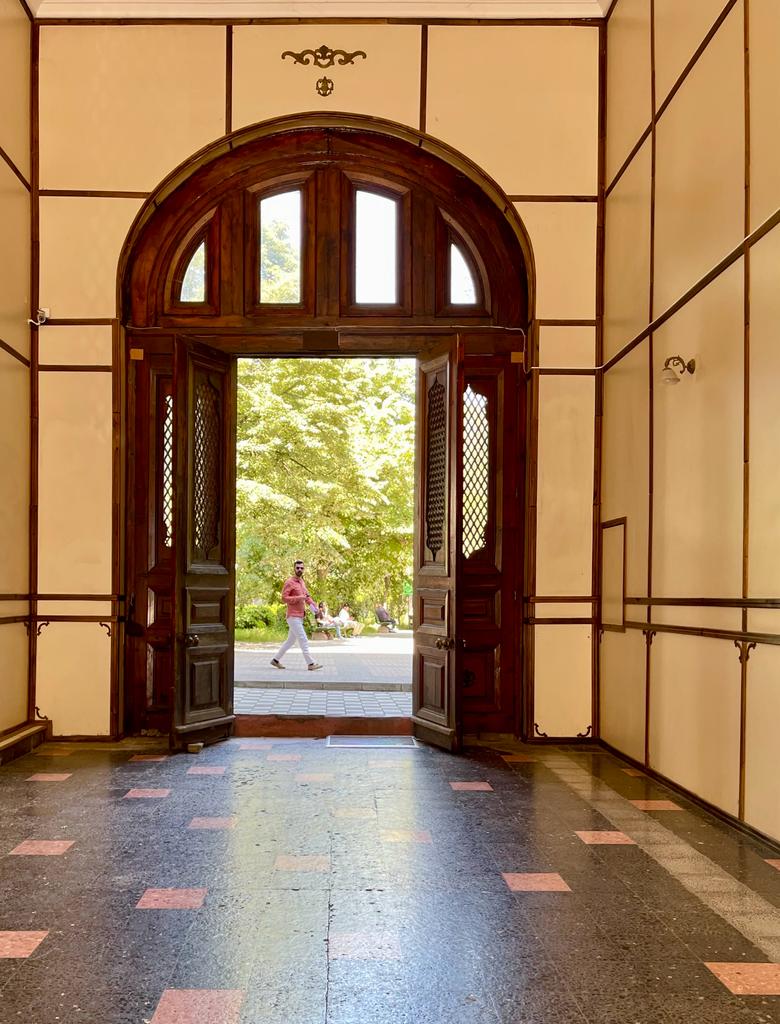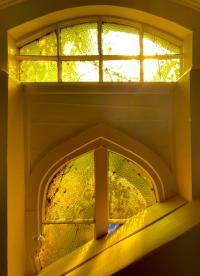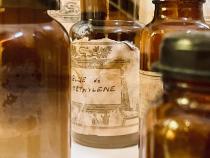
Sleepover in a historical hospital
My mother had surgery on Friday at the Istanbul Haydarpaşa Numune Training and Research Hospital. Her procedure went smoothly without any complications, thanks to her surgeon General Surgery Specialist Associate Professor Dr. Metin Tilki. My dear friend Professor Dr. Bala Basak Oven introduced him to my mother, like she had introduced my family and friends to so many good doctors over the years and provided guidance and insight in health matters. After the procedure my mother had to stay at the hospital at least for one night to recover and I stayed with her.
She had regular check-ins with the assistant doctors, medical students, nurses and patient caregivers, all of whom never forgot to leave the room without a ‘gecmis olsun’ (‘get well soon’) delivered in a caring tone. I was stunned by the consistency, and their message reminded me of the impact of caring from the heart and my heart beat for all health professionals around the world.
 My mother and I stayed that night in her high-ceiling white-washed room overlooking the front garden of the hospital. From the windows that were at least three feet tall behind large pine trees, I could barely see the street bustling with cars, buses and pedestrians. Like the room’s door, the window had two parts: a pane of glass that could open independently at the top besides the pane at the bottom. I figured that the top parts were used to circulate the air without disturbing the flow of operations below as they were at unreachable height for human beings.
My mother and I stayed that night in her high-ceiling white-washed room overlooking the front garden of the hospital. From the windows that were at least three feet tall behind large pine trees, I could barely see the street bustling with cars, buses and pedestrians. Like the room’s door, the window had two parts: a pane of glass that could open independently at the top besides the pane at the bottom. I figured that the top parts were used to circulate the air without disturbing the flow of operations below as they were at unreachable height for human beings.
When visitors were gone in the early evening, when the hospital was left for patients and health professionals staying overnight, the doors seemed to get taller, the corridors longer, the paintings on the walls brighter. The nightfall and darkness outside illuminated everything about the building on the inside. It was clear the building had a presence that did not just blend in with the surrounding trees and streets.
Commissioned by Sultan Abdulhamid II, the building was completed in 1903 and meant to be a medical school. It opened its doors to the first class of students on November 6, 1903, purposefully on the sultan’s birthday. Thirty-three years later, in 1936, it was converted into a hospital and research center.

The building was designed by architect Valery and Monsieur D’Aranco. The exterior facades were made from two-tone stone carved in Hereke style. The lime used for mortar was brought from Marseilles, and the iron brought from Belgium. The section of the building on the seaside has four floors, the first was designed as a recess hall, the second as a dining hall, the third as a classroom and the fourth as a dormitory.
After dinner, I wanted to get tea for my mother and myself from the cafeteria outside the hospital’s campus. On my way, I noticed the intricate patterns on the mosaic floor – and the library sign – right before I made my first step down the spiral stairs. Getting closer to the library, I could not stop myself from knocking on the door. Nobody answered. I opened the door. It was a library indeed with walls of books, comfortable chairs and a whiteboard.
I inhaled the smell of old books on the shelves and tiptoed to the back corridor to see a painting of a man in a white coat walking on a wire hung up across a dark hole of rocks but getting sunlight from above. I took a staircase that led me to a landing where an exhibit of medicines and tools used earlier in the hospital and a gift, a caftan from Uzbekistan, hung on the wall. The hospital had a small museum as well, I thought.

My attempt to go out from the giant breathtaking dark wood doors was not fruitful as the two doors facing each other were locked. I laughed out loud in the empty corridor which nobody heard. There must be another door in the hospital somewhere that was unlocked. Finally, I found that door, crossed the backyard and passed the small, relatively newer building where I had a rabies shot last year on my last day of visiting before going back to the U.S. I had been scratched by a stray cat.
When I returned to the room with black tea from the cafeteria, my mother was delighted. We talked about random stuff and laughed between sips. During our stay, we also took walks along the wide and long corridors, taking slow and small steps to give us time to see all the details in the paintings on the walls.

Saturday morning was like a continuation of Friday night with interrupted sleep. The difference was the anticipation of being discharged. I opened the window to get fresh air after the morning visit of the nurse. The city was already awake. The cars and shuttles already started transporting people. Birds were awake.
From the window, I noticed Siyami Ersek Cardiovascular Surgery Training and Research Hospital where my father had a surgery a couple of years ago. I paused breathing momentarily. My mother and I were so impatient to go home that I quickly packed everything and waited for the surgeon’s visit. After he confirmed her discharge, all we needed was one minute to put on our coats and leave the hospital. I put the carry-on in the corridor before closing the room’s door. My mother said, “I still have the tubes in my arm and hand!” We forgot about that.
 With long faces, we went back to the room and I found a nurse. She said she cannot remove the tubes until she gets the notification of the discharge, which she didn’t receive. She made some calls. To make the process faster, she suggested that I find the assistant doctor and gave me the directions to find him on the other side of the hospital. It was the less nice side, the much busier side serving different units. It also was where my brother had to stay a long time ago when I was in the US, unaware of what was going on. My attempt was fruitless, so I returned to my mother’s room, and we waited.
With long faces, we went back to the room and I found a nurse. She said she cannot remove the tubes until she gets the notification of the discharge, which she didn’t receive. She made some calls. To make the process faster, she suggested that I find the assistant doctor and gave me the directions to find him on the other side of the hospital. It was the less nice side, the much busier side serving different units. It also was where my brother had to stay a long time ago when I was in the US, unaware of what was going on. My attempt was fruitless, so I returned to my mother’s room, and we waited.
Everything was the same in the room, but we were different. We were so ready to break out but stuck. I felt much shorter in the room. When we got all the paperwork done, the nurse acknowledged our impatience and said, “Just run away this way!” She pointed and we did.
My mother needed more time to recover but she was so done with the sleepover. So was I.
Eda Uzuncakara
IG: eda.u.kara
sparksinshadows@gmail.com





